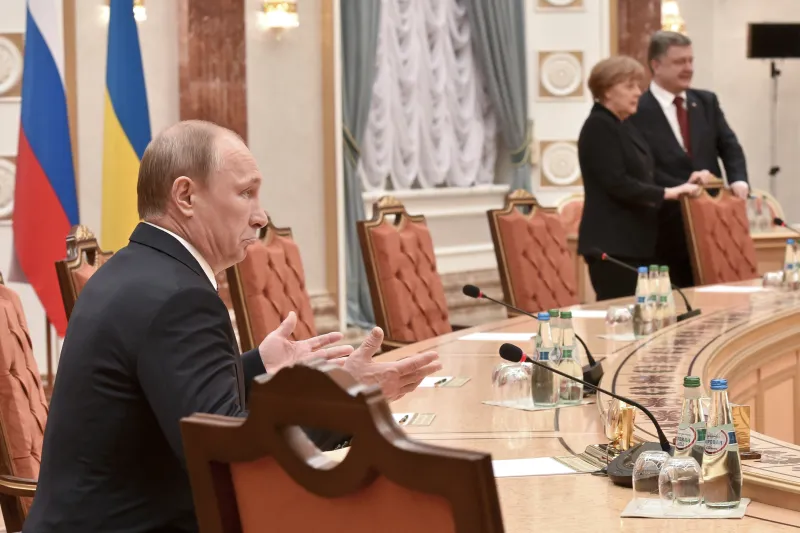On February 18, Russian and U.S. officials met in Saudi Arabia to begin talks to end the war in Ukraine—the first such high-level dialogue to take place since the 2022 full-scale invasion, but one without Ukrainian representatives. Ahead of the talks, U.S. President Donald Trump made concessions to Russian President Vladimir Putin and has since told Ukrainian President Volodymyr Zelensky that he was “gambling with World War III.” Accommodating Russian narratives and positions could turn out to be a provocative yet smart move to bring Putin to the table—but only if Trump sets high standards and demands once negotiations begin.
So far, Trump’s steps toward negotiations have too strongly resembled the Minsk process that began after Russia’s annexation of Crimea and occupation of parts of Ukraine’s Donetsk and Luhansk regions in 2014. Negotiated by the so-called Normandy Four—the heads of state from France, Germany, Russia, and Ukraine—the process produced two sets of agreements, Minsk I in 2014 and Minsk II in 2015, both of which set out terms for a cease-fire and outlined steps toward a political resolution in the Donbas. These weak agreements were never properly implemented, and as Putin launched his 2022 invasion, he voided them outright.
The political and strategic context has changed dramatically since 2014. But the Minsk process’s bitter lessons remain more relevant than ever. Unfortunately, the new U.S.-led negotiations appear to replicate specific weaknesses from the Minsk process, such as excluding major parties to the conflict and rushing toward an undefined cease-fire with little enforcement and security guarantees. Like the current negotiations, the Minsk agreements sacrificed the complicated yet achievable prospect of durable peace for short-term diplomatic gains. If Trump truly wants to be the figure who brings the fighting between Russia and Ukraine to an end, he should not repeat Minsk’s mistakes.
Past Failures Make Clear That an Imposed Peace Won’t Last
IMPOSED DEALS
By seeking an agreement in principle and postponing work on the details, in the mid-2010s the Kremlin set a trap that destroyed the Minsk agreements—a trick it appears to want to redo now. The Minsk process was not meant to proceed in two parts. The process was initiated by the Normandy Four through the Trilateral Contact Group, which included representatives from Russia, Ukraine, and the Organization for Security and Cooperation in Europe (OSCE). But Minsk I, signed on September 5, 2014, failed to stop Russian advances. After months of continued fighting and a devastating Ukrainian military defeat at Debaltseve, a second agreement, Minsk II, was negotiated and signed on February 12, 2015.
